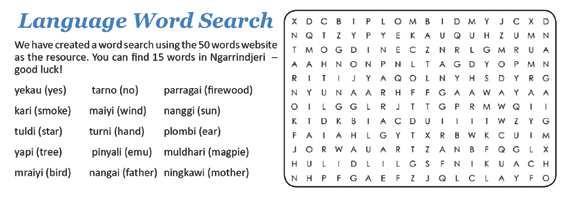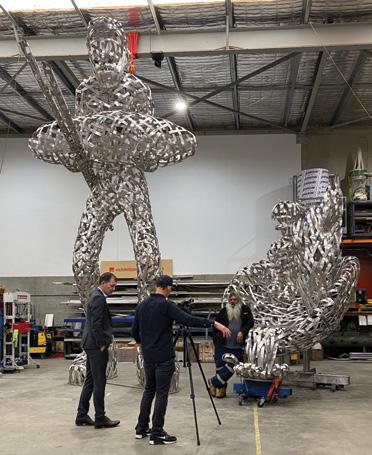
27 minute read
South Road sculptures
A new installation of sculptures celebrating Kaurna culture have been installed to sit proudly on the corner of the South and Sturt Road intersection, one of the final pieces of the Darlington Interchange.
The sculptures pay tribute to the Tjilbruki Dreaming story, the best-known Dreaming narrative of the Kaurna people, based on a complex and multi-layered story of creation, law and human relationship.
Advertisement
They were created by Kaurna/Ngarrindjeri artist Alan Sumner in collaboration with artist Karl Meyer and Exhibition Studios who specialise in the design and construction of innovative, engaging public art and exhibitions. The artworks were commissioned by the Department for Infrastructure and Transport (DIT) and owners, the City of Marion and the City of Mitcham.
This first installation is called puru yuwanthi, meaning still standing. Tjilbruki is a pukiana miyu ancestor of the Kaurna miyurna people, from the time after the sea waters had risen and created wangka yarlu (the Gulf of St Vincent). In the dreaming, Tjilbruki travels to the big camp at Warriparinga (Darlington) where he finds the body of his nephew and carries the body to the freshwater spring at Tulukutangga (Kingston Park). This multi-faceted journey continues South of Adelaide to Cape Jervis at the bottom of the Fleurieu Peninsula.
The second piece is called purruna martinthi, meaning to cradle life. Water and fire are essential to living and giving life. The child form expresses strength and reflects the importance of family. The Coolamon acts as a vessel for family, fire and water and is grounded in the big camp at Warriparinga (Darlington).
The sculptures were the product of the collaboration of Aboriginal Contemporary Arts, Kaurna Yerta Aboriginal Corporation, Exhibition Studios, Department for Infrastructure and Transport (DIT), the City of Marion and the City of Mitcham. They stand on Sturt Road as an impressive welcome to the $754.5 million Darlington Interchange project.
The artworks were installed on 16 October 2020 with attendance from the Minister for Infrastructure and Transport Mr Corey Wingard, Mayor of Marion Chris Hana, CEO of Marion Adrian Skull, Mayor of Mitcham Heather Holmes-Ross, City of Mitcham CEO Matt Pears, Kaurna Yerta Aboriginal Corporation (KYAC) Representatives, Kaurna Elders, Senior DIT project team and the collaborating artists.
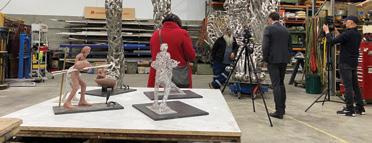
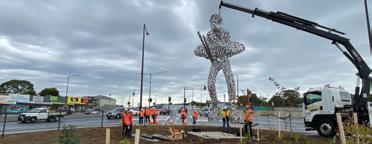
Mining Regulations Consultation Report
The submissions received through the Department for Energy and Mining (DEM)’s public consultation process over the course of 2020 have been summarised into a consultation report, which provides an overview of the changes made to the draft mining regulations. Key issues that arose from these submissions included questions around compliance regarding exploration on native title land and a desire for more periodic compliance auditing. Feedback was that non-compliance issues to be declared by an applicant should not relate only to mining, but also to relevant historical native title and Aboriginal heritage issues (amongst others), as this information could inform decisions by the Minister to grant or renew a tenement. Therefore, a change to the draft regulations relevant to the Aboriginal and Torres Strait Islander sector is that an applicant must declare serious, relevant non-compliances in the last five years relating to native title and Aboriginal heritage, environment and safety. This would include offences imposed by a court, loss or suspension of approval (eg EPA licence, work permit, mining leases), and orders given by a regulator requiring work to stop or rehabilitation to begin. Of the 58 formal submissions received during the consultation process, two came from Aboriginal groups, 20 were from the mining industry, 10 from individuals involved in the quarrying or mining industry, five were individuals, seven were professional bodies and associations, and nine others were from mining sector consultants, government departments, non-governmental organisations (NGOs), community groups and academics.
The Department says that, moving forward it will work with industry and stakeholders on further non-regulatory matters in 2021, during the transition to the new regulatory arrangements.
The Mining Regulations Consultations Report can be found in full on the Energy and Mining website at www. energymining.sa.gov.au
South Australian Film Corporation launches new First Nations Screen Strategy
South Australian Film Corporation (SAFC) has launched a new fiveyear strategic plan to develop First Nations talent and content and to bolster opportunities for Aboriginal filmmakers in the state.
The First Nations Screen Strategy 2020–2025 aims to grow support for the sector in four main areas: growing investment, increasing production, creating productions and building industry networks. “The SAFC’s First Nations Screen Strategy 2020–2025 is built on a tradition of 75,000 years of storytellers across South Australia, from the desert to the sea, and builds on the work we have achieved over the past five years,” said SAFC First Nations Screen Strategy Executive, Lee-Ann Tjunypa Buckskin.
“Our commitment is to continue to grow and invest in developing ambitious and unique projects for First Nations practitioners on screen and on digital platforms. Integral to our work is that we value working with our First Nations Advisory Committee whose passion for First Nations stories brings a wealth of experience and cultural authority that continues to guide, encourage, and provide us with direction.”
Officially launched during NAIDOC Week 2020 by Minister for Innovation and Skills The Hon. David Pisoni MP, the strategy aims to grow grant applications from First Nations screen creatives by 2% per year by supporting regional initiatives such as the Port Augusta Regional Program ‘Local Stories Told Our Way’; working with Anangu Pitjantjatjara Yankunytjatjara (APY) communities to produce content that’s relevant or local to them; creating an Emerging First Nations Screen Development Program, and continuing to work in partnership with Screen Territory, Screen Australia Indigenous Department, AFTRS Indigenous, ABC, NITV and the Documentary Australia Foundation.
“The SAFC has a long and distinguished history of screen culture within Australia, and I commend and congratulate the SA Film Corporation for its continued work in boosting the voices and stories of our Aboriginal and Torres Strait Islander communities. I’m confident that this Strategy will play an important part in preserving culture and helping Indigenous practitioners to build successful careers and take their stories to the world,” The Hon. David Pisoni MP commented.
The strategy includes a new partnership with Adelaide community television broadcaster Channel 44 which will provide on-the-job training and mentorship to up to eight First Nations filmmakers, including three paid producer and crew roles at the station, and SAFC supported short films made by First Nations filmmakers aired statewide throughout the year.
“As an organisation with storytelling at its heart, the SAFC is committed to highlighting and supporting First Nations voices and stories on screens locally and globally. Together with South Australia’s First Nations screen industry we have achieved significant outcomes through our Aboriginal screen strategy since 2015, and we are incredibly proud of the stories that have been created for audiences to appreciate,” said SAFC CEO, Kate Croser.
“Looking forward over the next five years, through our new First Nations strategy the SAFC commits to growing the level of investment into South Australian First Nations screen production, creating new market partnerships, and strengthening the capacity, creativity and connectedness of the South Australian First Nations screen sector.
“We are very excited to be partnering with Channel 44 on this new First Nations mentoring initiative, which will enhance the visibility of South Australian First Nations practitioners and their work, and help to establish and formalise even more career pathways for our state’s emerging screen talents.”
The SAFC’s new First Nations Screen Strategy booklet and showreel and a special video showcase of SAFC-supported SA First Nations productions can be found at www.safilm.com.au
Funding for Aboriginal Art and Cultures Centre boosted to $200 million, new ambassador appointed
Late last year, an additional $50 million was announced in the South Australian State Budget to complete the new Aboriginal Art and Cultures Centre (AACC), which is expected to be open at Lot Fourteen, the former Royal Adelaide Hospital site, by 2025. This raises the total commitment for the centre to $200 million, made up of $85 million from the Australian Federal Government and $65 million previously allocated by the State Government. Leader and advocate for South Australia’s Aboriginal communities David Rathman AM has also been appointed Ambassador for the AACC.
A proud East Aranda man with family connections to Kokatha, Arabana and other SA nations, Ratham has had a long career representing Aboriginal people and was made a Member of the Order of Australia in 2000 in recognition of this.
He is currently a member of the South Australian Museum Board and Chair of its Aboriginal Advisory Committee, a Board member of the Aboriginal Legal Rights Movement and Co-Chair of the SA Water Reconciliation Committee. their own connection, in terms of a cultural and spiritual journey over 60,000 years,” Rathman said.
“When people walk into our Centre, the Aboriginal experience will walk forward and embrace them. We want people to feel part of their journey too and to come back many times over and bring their future generations. The Centre will have the most comprehensive collection of Australian Aboriginal cultural material in the world,” he said.
This is due to more than 30,000 items from the South Australian Museum that will be displayed alongside artefacts and works of art in all forms from around the country and locally, including from Tandanya and the Art Gallery of SA.
The AACC will be Adelaide’s second Aboriginal Cultural Institute alongside the Tandanya Aboriginal Cultural Institute, which celebrated its 30th anniversary in 2020.
Project lead Diane Dixon has spent the last 12 months working with Aboriginal communities and cultural institutions including Tandanya in an effort to create something globally unique.
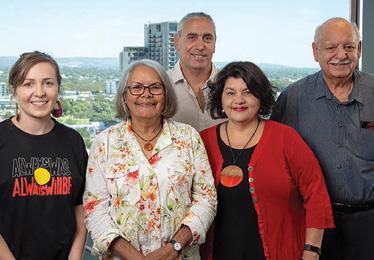
The AACC Aboriginal Reference Group (ARG) from left to right, front row: Jessica Davies-Huynh, Kaurna People through Kaurna Yerta Aboriginal Corporation; Sandy Miller, SA Museum Aboriginal Advisory Committee; Kirstie Parker, Aboriginal Affairs and Reconciliation, Department of the Premier and Cabinet. Back row: Karl Telfer, Tandanya National Aboriginal Cultural Institute; David Rathman, Project Ambassador (Co-Chair). Some members not present.
said the appointment of Ratham to the role of Ambassador would help strengthen the participation of Aboriginal communities in the Centre’s planning and implementation, with construction anticipated to begin this year.
“David Rathman will be an outstanding advocate for the AACC, drawing on his knowledge of Aboriginal cultures and his experience working with and for Aboriginal communities across culture and history, education, health and community welfare,” said the Premier.
“The AACC will position South Australia as the gateway to the oldest living cultures in the world by offering extraordinary immersive experiences, combining traditional storytelling with modern technology, to create a global tourism attraction.”
On New Year’s Eve 2020, Prime Minister Scott Morrison announced a change to the second line in Australia’s national anthem, Advance Australia Fair, from “young and free” to “one and free” from the 1 January this year. The word change was approved by GovernorGeneral David Hurley on recommendation from the Morrison Government.
“Australia as a modern nation may be relatively young, but our country’s story is ancient, as are the stories of the many First Nations peoples whose stewardship we rightly acknowledge and respect,” Morrison wrote in an opinion piece in the Sydney Morning Herald on 31 December last year. “In the spirit of unity, it is only right that we also now acknowledge this and ensure our national anthem reflects this truth and shared appreciation. Changing ‘young and free’ to ‘one and free’ takes nothing away, but I believe it adds much.”
The announcement, while a surprise, came after months of calls for the change, first suggested publicly during NAIDOC Week 2020 by New South Wales Premier Gladys Berejiklian, then supported by Minister for Indigenous Australians Ken Wyatt AM and Labour leader Anthony Albanese. “I feel for Indigenous Australians who don’t feel the national anthem reflects them and their history,” said Ms Berejiklian. “And I think if we say, ‘We’re one and free’, it acknowledges that we’re not really young as a continent. We’re tens of thousands of years old when it comes to human inhabitants.”
Her comments came after a number of Indigenous NRL players refused to sing the anthem during the State of Origin series, saying it does not reflect their story as First Nations people. Opinions to the change have been varied, with some feeling it’s tokenistic. Boxing champion Anthony Mundine said the change wasn’t good enough. “One word ain’t gonna change the core meaning of a song,” said Mr Mundine in a statement.
“It’s always gonna be a white supremacy song until the whole song is rewritten.” Ken Wyatt, however, stated that “changing the national anthem is real reconciliation” and that he would be proud to sing the anthem.
A DVA NCE AUSTR A LI A FA IR
Australians all let us rejoice, For we are one and free; We’ve golden soil and wealth for toil; Our home is girt by sea; Our land abounds in nature’s gifts, of beauty rich and rare; In histor y’s page let ever y stage Advance Australia Fair. In joyful strains then let us sing, Advance Australia Fair Beneath our radiant Southern Cross, we’ll toil with hearts and hands; To make this Commonwealth of ours, renowned of all the lands; For those who’ve come across the seas, we’ve boundless plains to share; With courage let us all combine to Advance Australia Fair. In joyful strains then let us sing, Advance Australia Fair.
Advance Australia Fair was written in 1878 by Peter Dodds, but it took more than a century for it to replace God Save the Queen as Australia’s national anthem. After a series of polls conducted throughout the 1970s and early 80s, the song was officially adopted in 1984. That same year the first line, “Australia’s sons let us rejoice” was changed to “Australians let us all rejoice” to be inclusive of women by the Prime Minister of the time Bob Hawke using his executive powers. What do you think? Is changing one line in the song enough or should we have a completely different song for our national anthem?
Telstra faces $50m fine for exploitation
Australia’s largest telecommunications provider has admitted to taking advantage of vulnerable members of the Indigenous community and breaching Australian Consumer Law, which could result in a penalty of up to $50 million. Between January 2016 and August 2018, 108 Aboriginal and Torres Strait Islander customers were signed up to multiple postpaid mobile phone contracts which they “did not understand and could not afford”, according to the Australian Competitor and Consumer Commission (ACCC).
Telstra has admitted that staff in the five stores concerned, which includes the South Australian Arndale store, used unfair selling tactics to sign each of these individuals up to contract on a single visit, and acknowledge that they have no systems in place to detect or protect this type of operation. “Many of the consumers spoke English as a second or third language, had difficulties understanding Telstra’s written contracts, and many were unemployed and relied on government benefits or pensions as the primary source of their limited income. Some lived in remote areas where Telstra provided the only mobile network,” said the ACCC in a statement.
“In some cases, sales staff at the Telstra licensed stores did not provide a full and proper explanation of consumer’s financial exposure under the contracts and, in some cases, falsely represented that consumers were receiving products for ‘free’. In many instances, sales staff also manipulated credit assessments, so consumers who otherwise may have failed its credit assessment could enter into post-paid mobile contracts. This included falsely indicating that a consumer was employed.” The average debt per consumer was more than $7,400, with many of those affected facing severe financial hardship and distress. One person ended up more than $19,000 in debt, another experienced extreme anxiety worrying that they would go to jail if they couldn’t pay their bill and someone else withdrew funds from their superannuation to pay their Telstra debt. “This case exposes extremely serious conduct which exploited social, language, literacy and cultural vulnerabilities of these Indigenous consumers,” ACCC Chair, Rod Sims said. “Even though Telstra became increasingly aware of elements of the improper practices by sales staff at Telstra licensed stores over time, it failed to act quickly enough to stop it, and these practices continued and caused further, serious and avoidable financial hardship to Indigenous consumers.”
Telstra has since taken steps to waive the debts, refund money paid and look into steps to reduce the risk of similar conduct in the future.
The mobile phone giant will be taken to Federal Court by the ACCC following 18 months of investigation. If imposed by the Court, the fine would be the secondhighest total penalty ever enforced under Australian consumer law.
Disabilit y royal commission finds First Nations children removed from families at higher rate
Over a week in late November, the disability royal commission held a public hearing about the experiences of First Nations people with disability and their families who interact with child protection systems.
The hearing uncovered some important truths, including the fact that First Nations children with disability, or First Nations children whose parents live with disability, are being removed at much higher rates than non-Indigenous children. A report from the Australian Institute of Health and Welfare found more than 50,000 First Nations children received child protection services over 2018/2019, which was eight times the rate of non-Indigenous children.
“It does seem that despite all the reports and all the programs that have sought to address First Nations disadvantage, things have actually gone backwards in recent years,” Chair of the royal commission, Ronald Sackville said. “When you read some of the material, it has an unfortunate resonance of the Stolen Generations and we have to be careful that this country does not repeat errors of the past.”
Pat Turner AM, CEO of National Aboriginal Community Controlled Health Organisation (NACCHO) thinks that such important decisions should be up to the family, supported by appropriate industry experts. taken from them, and they should be properly represented by experts that can assist them in protecting their own rights,” Ms Turner said on ABC’s The Drum.
“Every child protection system in this country, as far as our people are concerned, is broken. Is absolutely broken. Because what they are trying to address under the banner of “keeping children safe from harm” are the symptoms rather than the cause.”
Af ter native title: Spotlight on Ngarrindjeri Aboriginal Corporation
Three years on from determinations, the Ngarrindjeri Aboriginal Corporation is thriving as it builds sustainable partnership with regional councils and the local community. Aboriginal Way speaks Interim CEO Tim Hartman:
Part A of the Ngarrindjeri native title claim was determined just over three years ago now, becoming incorporated on 6 December 2017 and registered at the beginning of January the following year.
Nearly 20 years after the claim was first lodged, the determination was a very emotional time for a lot of families. The claim had been first initiated and led by a number of key elders and community members and unfortunately not all of those people were now around to see the final determination.
One of the key exciting things about finally getting to the determination was the recognition that Ngarrindjeri have always had and always will have our connection to our Yarluwar-Ruwe, our sea country, and this recognition just validated what has always been our position; that Ngarrindjeri should be involved, should participate and should have a voice in regards to what is occurring across Ngarrindjeri country.
Where does Part A cover specifically? Part A of the Ngarrindjeri native title claim that was determined covers from Cape Jervis along the coast down south to the Coorong, just about to Salt Creek, then travels inland to include the Coorong, the Lakes and the Lower Murray River system. It’s quite a significant area not only for us, but internationally it’s very significant as well because of the huge differences in the biodiversity, the wetlands, the estuaries, the largest permanent pressure water lakes and the River Murray system. It has huge amounts of natural resources which, for Ngarrindjeri means that we’re able to exercise some native title rights and interests – activities out on country from fishing, to camping to hunting.
What about Part B, what are of land does that cover?
The claim over Part B covers from Salt Creek south to about 20 kilometres north of Kingston in the South East. That particular area is an overlap between Ngarrindjeri and the first peoples of the South East, which is currently going through a process with the native title courts now and should hopefully be determined in the next year or so.
Did the determination change your relationship to the land? Or did it just give you that much more accessibility to it?
We’ve always had cultural connectivity to country, so it hasn’t really changed our relationship to the land but having that determination has changed the relationship we have with the rest of the community. It’s meant that our ability to access certain parts gives us more of a voice to negotiate processes in them.
Ngarrindjeri need to and should be sitting at the table to participate in the decision making around how the land is managed, how planning is undertaken and the decisionmaking processes moving forward.
Can you tell us a bit about what’s taken place since becoming incorporated?
I’ve only been in the role for 2–3 months, but I have been active in our native title organisation since February, so I can give a bit of a snapshot. In managing the determined area, one of our largest challenges but also opportunities, is having a clear understanding of what having a native title determination means for us as a nation. What does that look like and what relationships can be developed from it? One of the key things we’ve been doing is increasing membership. For example, the current board came on in around February this year. We initially had only 20 or 30 members. We’ve grown that, even during COVID-19, to nearly 300. So we’re actively trying to incorporate and get as many Ngarrindjeri who have native title rights and interests as common law holders actively involved in the organisation; having a voice and helping to set that future direction and strategic vision.
The Corporation is based in Murray Bridge. Do you feel like you’ve become embedded in the local community there?
Yes, we’re gaining more traction. It’s been a challenging year with COVID-19 to keep up our ability to interact and engage with the community, including with our own mob, as much as we would like to. As a community, we Ngarrindjeri like to meet face to face and go out on country to discuss what our priorities are, what the interests we need to capture are, and what the Ngarrindjeri values are that we need to incorporate into our business and our future relationships with different levels of government or other agencies or even private industry.
So we’ve been adapting how we achieve that engagement through utilising the technology available to us to ensure we keep our directors and our membership base informed and maintain broader engagement with government or other parties that we want to strengthen our ties to and collaborate on shared business with.
As a native title body, a lot of our areas of interest lie specifically around land, water, culture and heritage, so we try to ensure Ngarrindjeri values and interests around that heritage are being incorporated, respected and valued with the broader community.
That’s probably been the biggest change since determination; we’re now sitting under Commonwealth legislation and that gives us a seat at the table where we can start to have equitable, respectful dialogue and try to activate true shared outcomes where our interests intersect.
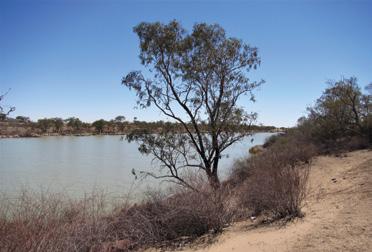
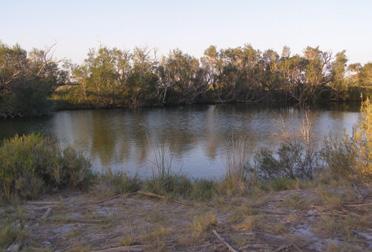
And you seem to be doing quite well with that already. You’ve connected with the five local councils in the area: The Rural City of Murray Bridge, Coorong District Council, Alexandrina Council, Victor Harbor City Council and Yankalilla District Council and with different Departments – how’s that been going?
Yes that’s been going quite well. Another of our key initiatives when the current directors came on board was to reach out to those local governments – they are quite significant areas; large townships and council regions. Part of our strategy was going out and meeting with them and telling them who we are, what our roles and functions are, what our objectives are and what the pieces of legislation are that we’re all responsible to under the Native Title Act. As a Prescribed Body Corporate in South Australia, we’re recognised as the go-to body for the South Australian Aboriginal Heritage Act as well.
So we’ve been able to utilise the legislations we’re accountable to as the initiation conversation drivers but then try to build dialogue into something beyond that by looking strategically at what our shared interests are and building respectful relationships around activating that shared business.
Our current Chairperson Uncle Clyde Rigney senior has a very good saying: we can’t do it alone; they need us, and we need them, and we need to be able to collaborate on shared business.
I would say that one of our biggest achievements thus far has been to bring all five of the councils; all mayors and CEOs together in one place, as well as all of the state and commonwealth partners that we’re working with, to start talking about how we develop and activate these relationships. The strategy there is to enter into a master services agreement which then puts it into writing. Not only does that define the relationship, it provides clarity and accountability for both parties to ensure we have a process which is going to meet everyone’s expectations.
How did that go?
It was received very well. Since that meeting, we’ve been catching up with each of the five councils to progress the agreement-making process. Each council has indicated their willingness to negotiate and work through that.
So ideally, what sort of goals are you working towards – what do you hope to achieve?
Well, we’re also working with a number of South Australian state government agencies such as the Department of Environment and Water and the Department of Transport about some of
the major investment and projects such as environmental management actions that are going on within the state. This clearly targets where our interests lie. What this does is it gets Ngarrindjeri engaged early on in the proposal, planning and design process, prior to implementation, so we’re able to make sure that Ngarrindjeri rights, interests and cultural values and opportunities are identified to elevate our community and involve them in the delivery of regional projects.
That’s the aspiration, whether it’s at a local government level, a state level or a Commonwealth level; to leverage and utilise the relationships we develop to elevate our community and get them involved in the decision making to have a voice and become part of the planning process, participate in implementation and identify opportunities as they arise.
The opportunities could be anything; they could be specifically around engagement, protection of cultural heritage management, procurement services for the delivery of projects – even looking at things like Aboriginal employment targets and how we can help achieve them at a localised level.
We’re already working with different state agencies on initiatives like incorporating Ngarrindjeri language and information into signage, establishing Ngarrindjeri artwork in places of public art, ensuring Ngarrindjeri interests and values are incorporated into the design of buildings or infrastructure.
Every time we do that, there’s the opportunity to tell our story, share our history, create respect for our culture and demonstrate that Ngarrindjeri are actively managing our shared landscape.
If you could look 10 years into the future Tim, where would you hope to see yourselves?
My personal vision would be that our community has been elevated. That we’re carrying out our native title rights. That the opportunities we’ve been offered have been accepted. That it’s not an obligation for other agencies and organisations to engage with us; that they see it as normal business. That working with Ngarrindjeri is not an afterthought – it’s the first thought. That culture has been changed both internally within our nation and externally in our relationships with everyone else.
Being able to clearly identify and articulate what our role is within the region is important, too. This way opportunities and employment are being created, culture is being valued, knowledge is being transmitted across generations and cultures. I see this as being crucial to building a healthy, vibrant Ngarrindjeri community who are able to participate at a regional level.
We’re only a small organisation at the moment, but as we develop these relationships and initiatives, we hope to grow our business to employ more people and provide that voice and leadership within our community, our region and even within the state.
50 Words Project
If you want to learn how to say a word in another language, where do you go first to find it? Probably in this day and age, the internet? What about if you’re trying to learn words in Indigenous languages from across Australia? Or you’re trying to find words from your family’s background? You might know if you’ve tried that it can be difficult to find the right resources to do this. That’s why the Research Unit for Indigenous Language at the University of Melbourne came up with the 50 Words Project, an online resource providing 50 words in as many Indigenous languages in Australia as possible. Seeing as though there are between 800 and 900 Indigenous languages across the country, this no small task. One year in, the project has collected the 50 words in 64 languages with more in the works, but the team are always looking for more as they see this as an important resource tool. “Language is a very central part of people’s connection to their heritage, their ancestors, their country, who they are, where they’re from; it’s very emotional and important for people to have a connection with their language,” said Professor Rachel Nordlinger from the Research Unit for Indigenous Language at the University of Melbourne, who’s behind the project. “It’s great to be able to showcase these languages and try to dispel some myths that I think are still floating around in the broader Australian community, where people don’t fully appreciate the incredible diversity and complexity of Indigenous languages. I don’t think we fully appreciate them in Australia in the way that we should.” The language groups of Australia are represented on an interactive map of the country online, so that users can
QUIZ TIM E! QUIZ TIM E! QUIZ TIM E!
Using the 50 Words map online, can you find the answers to these questions?
? What is the word for hand in Akarre? ? What is the word for Southern Cross in Barngarla? ? What is the word for firewood in Tiwi? ? What is mungawinki the word for tomorrow? ? In which language is jarlangardi the word for goanna? ? What are some words for welcome, hello and goodbye in your state? ? Near which major city is the language Awabakal spoken? ? On which islands is the language Mawng spoken? ? How would you welcome someone you've just met and find out their name in Wajarri? What about in WikMungkan, palawa kani and Mudburra?
50words.online
Language quiz courtesy of The Research Unit for Indigenous Language.
easily find the language group or area they are looking for, and ensure they are associating the words listed with the correct group and location. Users can simply click on the name of a group and the 50 words will appear alongside on the page in that language. The words are listed in written form with an audio recording by a language speaker, with community permission for their use from the groups who supplied them. “A crucial aspect of our project is that all of the language information available on our website is information that’s been provided by the relevant community members with permissions for it to be made public. So people can enjoy the website; school groups can use it, organisations can use it in different ways, and they can feel confident that they have the permissions of the community to do so, because that’s how the information has been provided,” said Professor Nordlinger. This map could be a useful resource for Aboriginal people to reconnect with their heritage by relearning or reviving traditional languages they might not be fluent in anymore; for schools or educational organisations to learn 50 words in their local language, or for anyone in the general public to discover and appreciate the diversity of First Nations’ languages around the country.
Go to www.50words.online to use it.
You can even contribute recordings for languages that are not yet included there.
The Research Unit for Indigenous Language has also put together a set of learning activities designed to accompany the map, two of which they’ve kindly let us publish here.
You can find more by clicking through to their website from the link above.
